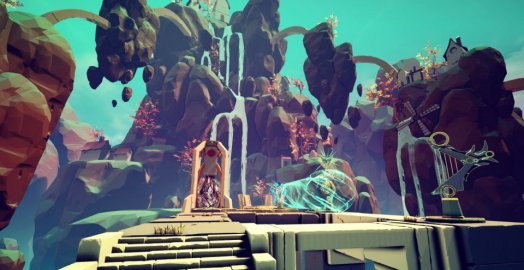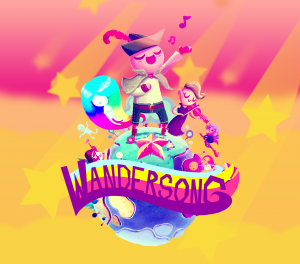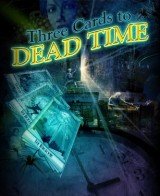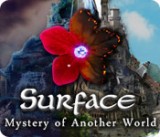Review for The Sojourn

Game information
Adventure Gamers Awards
Complex characters and gripping plots are all well and good, but sometimes all a gamer wants is the challenge of a good puzzle. Or many puzzles! That’s exactly what Shifting Tides’ 3D first-person adventure The Sojourn provides. Alternating between the real world and a similar yet shadowy dark version, you will make use of mystic statues, harps and other relics to circumnavigate obstacles in an endeavour to reach the end of more than sixty discrete levels. At times it can be confounding, at times even overwhelming, but it’s also a lot of fun.
The Sojourn plunks you down in a dark passageway at the outset. No explanation is ever given for how you got there or even who you are, but soon a glowing orb appears and lights your way through the passage, which resembles an ancient tunnel possibly inspired by the Sphinx or Cretan labyrinth. It’s clear that there is a somewhat mystical quality to this place, as the sphere also calls into existence potted plants, stone pillars, steps and the like. Following the orb leads very quickly to the heart of the experience: its puzzles.
At first glance, this game seems to combine the silent, solitary exploration of Myst with individual puzzle levels akin to Portal's test chambers. However, I found the game most reminiscent of Lemmings. To be sure, there aren’t hordes of mindless critters wandering about with their lives in your hands. I’m thinking more of the plethora of tools the ’90s classic puzzle game provided for solving levels. The Sojourn has a lot of tools too, but at the core of them all is the duality between the normal world and dark world.
The first puzzle level presents a round tile on the ground that emits a bluish, mystical flame. Stepping onto this tile will switch you to the alternate world where the surroundings become darker, wavier, and take on that same bluish tinge as the fire. At the same time, the gentle ambience of the real world audio falls away to assume a sort of ethereal, quasi-musical hiss. Most stages incorporate various statues and totems, and here in the dark world they wake up and can be used to accomplish something. For example, when you turn to face an awakened statue in the distance, a press of a button on the keyboard/mouse or controller will cause you to swap places with that statue. In so doing you can circumvent walls, chasms, or the prickly plants that grow up and bar your way.
The energy granted by the circular tile is finite. Stepping off and moving around drains that energy, depleting a visible bar until it empties, at which point you will transition back into the normal world. As you progress through the game, additional methods of entering or staying in the alternate world are introduced. In some levels, large arches adorn the path and walking through one permanently transports you to the dark world until another (or the same) arch is crossed. Later, mystical orbs called eyes appear; as long as you keep an eye centered on-screen and unobstructed, you will exist in the dark world. Turn away and you revert to the normal world again.
You can also prolong your stay in the alternate world through the use of reflector dishes on stands. These stands project cylindrical blue tunnels into the environment, and staying within these tunnels allows you to remain there. I found it particularly satisfying to arrange the tunnels in such a way that I could stay in the dark world as long as possible. Some crazy fun scenarios exist where you must rotate reflectors in different directions to intersect their tunnels with others. The reflectors can also be turned to train their energy on statues and other objects to keep them active. For instance, awakened mystical harps can be triggered, from any distance, to cause pathways to form adjacent to them. However, the harps only play music for a short period of time, after which, awake or not, the pathways they create disappear.
Certainly these examples aren’t exhaustive of all the gameplay elements in The Sojourn, but they give a sense of just how many moving pieces you have to play with during the course of the game. Each new element is integrated one at a time, often with several levels devoted to showing how to use it by itself and then in combination with the other mechanics already encountered. I found the gradual learning curve here particularly helpful as there are some cunning combinations of mechanics that did not immediately occur to me. This continues throughout the entire play experience, so there is always some new wrinkle to be expected.
Other than perhaps a few stone steps of verticality, everything – the paths, the statues, the other mechanical accoutrements – exists on a purely horizontal plane. There is no platforming needed and no vertiginous heights to climb or deep depressions to drop down to in order to solve the challenges at hand, which makes it easier to get an overall sense of the terrain and plan your moves. It should also make the game more navigable for those who struggle with free-roaming 3D environments. It is possible to step off gaps between the paths, and doing so will plunge you towards the backdrop below, such as a frigid pool in snowy mountains, or a misty fog at the base of a lush valley. But this is only a temporary setback as the game thoughtfully returns you almost instantly to the part of the path where you fell off without losing any progress. No unexpected deaths here!
Most (though not all) stages feature a bonus challenge goal. Once the exit is reached, additional parts of the level appear out of thin air in a rather impressive animated display. Among these new sections will be a pedestal with a golden scroll floating above it. Each of the game’s 46 scrolls contains a fortune cookie-like saying such as, “Silence often leads to clarity. Those who don’t treasure silence, walk through the valley of shadows,” or, “Lust for wealth is never satiated.” Getting to a scroll is usually much more difficult than simply reaching the exit, but obtaining all or even any of them is completely optional and does not change the ending.
Between levels you are placed in a hub world of sorts, with various doors leading to different challenges. Typically there are 4-6 such doors available at a time. Once all of the levels branching off of that hub are complete, a new avenue is opened, such as an elevator rising up through a dusty library, taking you to the next area. Most of the time it’s possible to return to an earlier hub if you wish to return for missed scrolls, but there are certain choke points in the game where you are physically relocated to a completely different place, or the path backwards is otherwise cut off.
Fortunately for completionists, towards the end of the game a garden is opened up that is decorated with stone pedestals showing all the scrolls that have been successfully gathered. For those that were missed, their corresponding pedestals can be used to return to the levels on which those scrolls remain available. I was able to get most of the scrolls my first time through, but some initially stumped me and I chose to move on without them, so it was especially rewarding to go back to them later to see how much easier they seemed after building up my experience through the rest of the adventure.
The Sojourn records your progress whenever you enter a hub area or one of the individual levels, but at times I would have preferred either the ability to save manually or at least be able to undo actions. There are a few places where it is possible to get yourself stranded so that you can’t reach the exit. The in-game menu does let you restart the level fresh, but after investing a fair bit of time to get that far only to make one misstep, it would have been nice not to be sent back to the beginning. However, I only ran into this issue on three or four occasions and getting stuck was always my fault, not some flaw in the level design. In fact, given how complex the challenges become, it’s impressive that there are so few places where getting trapped is a possibility.
The main focus of the game is unquestionably on overcoming its many obstacles, though between levels there is a little bit of implied narrative, for lack of a better word. Although there are no people to meet throughout the journey, you are guided by a couple of glowing orbs that leave trails of light behind them. Within levels, these orbs call all the elements of the challenges into being, but between levels they usually conjure up statue tableaus. These dioramas follow a man from childhood into old age by depicting moments in his life, with many of those around him wearing blindfolds. The meanings of these scenes are never made clear, allowing you to inject your own interpretation.
Along with the statues and level elements being brought into existence before your eyes, additional animated effects are also on offer. Whether gently flowing waterfalls, spinning windmills, running hourglasses, or just the glowing orbs circling around, there’s almost always something subtly moving in the background. I enjoyed taking a few moments to pause here and there just to admire the living 3D backdrops and listen to the serene music while contemplating my next steps. My personal favourite animated moments came during the challenges entered by jumping into pools of water. I just loved watching the levels form while submerged, only to have the water drain away, exposing the dry locations to explore.
As gorgeous as they are, the backgrounds do tend to look similar for stretches at a time. Once you reach a level surrounded by dark, foreboding cathedral towers, for instance, you’re going to be surrounded by dark, foreboding cathedral towers for a fair number of levels to come. This visual repetition made me feel at times like I was solving one extended sequence rather than progressing through a series of individual challenges. That’s not inherently a bad thing, but clocking in at a runtime of 16 hours to complete all levels and collect all bonus scrolls, this is a long game. Mixing up the scenery and soundtrack a bit more within the stages of any given hub area would have made for a welcome change, though really this is a fairly minor quibble.
When the environments do change it’s fairly pronounced, with various times of year and different lighting conditions represented. Colours are vibrant and the landscapes utilize a faceted 3D look that provides a good level of detail without veering into photorealism. Lush foliage, snow covered peaks, and the blowing sands of a dark desert are just some of the terrains to make an appearance before all is said and done. It’s a nice aesthetic that doesn’t scream for attention, instead being content to provide a thoroughly pleasant backdrop. In fact, the same could be said for the whole experience as a nice, contemplative, relaxing journey.
The Sojourn is a game that knows exactly what it wants to be: a serene but mind-bending, puzzle-centric adventure. With its understated but beautiful visual style and background audio, it’s easy to let yourself become immersed in the challenges at hand. New mechanics are continuously introduced throughout, helping to keep the gameplay fresh and the difficulty level rising as more and more fiendish combinations of those elements must be utilized. You won’t know much more about this surreal world when you finish than when you started, but if you’re missing the days of really challenging puzzles, this will be right up your alley and should keep you entertained for a good long while.
WHERE CAN I DOWNLOAD The Sojourn
The Sojourn is available at:
- GOG -75%
- Steam
- Epic Games
- HumbleBundle





_capsule_fog__medium.png)







__medium.png)
















